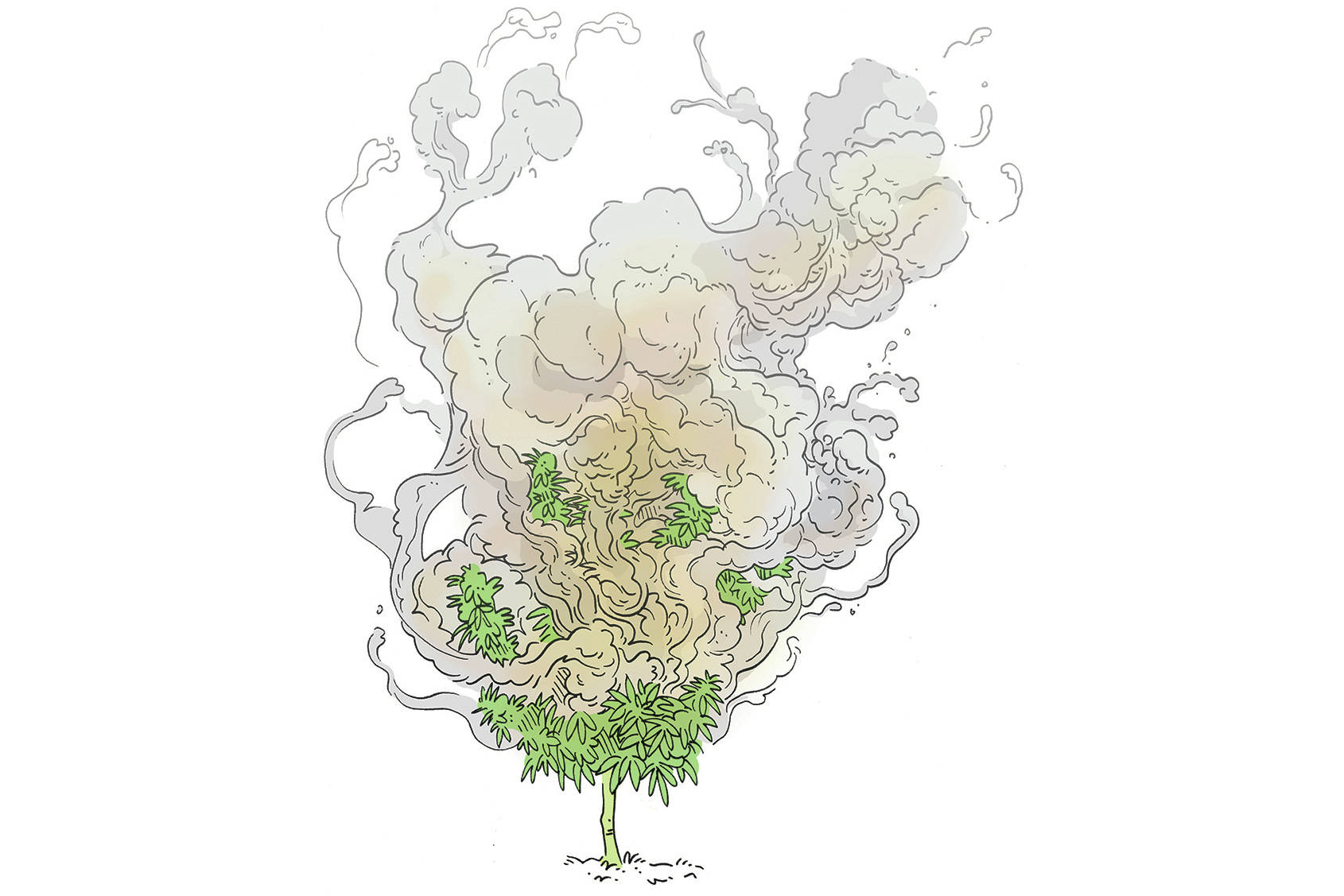California is facing its deadliest wildfire season on record with at least 40 confirmed dead at press time, and the tragedy is only compounded by the location of the fires: Napa, Sonoma, and Mendocino counties, home to some of the world’s most famous vineyards and weed farms. Authorities still don’t know the extent of the damage to the local cannabis industry, but so far more than 30 legitimate pot farms are known to be lost. Hezekiah Allen, executive director of the California Growers Association, told The New York Times he expected that number to “increase significantly” as people are allowed to return to evacuated areas. Not only is California’s cannabis market a massive economy—estimated at around $7 billion—but the state also supplies the U.S. with a majority of its black-market weed, with undocumented grow operations tucked into the backwoods all over the region.
Several factors make this a potential worst-case scenario for many growers. The fires have hit right at the height of the outdoor grow season, and many farms have ripened crops in the field, waiting for just the right moment to harvest. As Josh Drayton, a spokesman for the California Cannabis Industry Association, told the Times: “A lot of these crops have not been harvested at all, so that means a total loss on those farms.” Others just recently harvested and were in the process of drying their herb. Even in farms not directly affected by fire, smoke, ash, and other particulates could contaminate the buds, rendering them nonconsumable.
Then there’s the impact to the farm structures themselves. Many growers have invested thousands of dollars in the past two years getting their buildings and property up to code in anticipation of California opening the recreational market this coming January. A fair number of those growers were attempting to step out of the black market and go legit; 54-year-old Andrew Lopas is one. Having grown cannabis illegally for decades, he moved to growing legal medical last year, and was gearing up to join the recreational market in 2018. In an interview with Reuters, Lopas details his losses: around 2,500 pounds of weed estimated at a value of $2 million; $10,000 in cash (remember, banking is illegal for cannabis-industry folks); 900 plants; trucks and other work vehicles; and an 18th-century farmhouse. “That was all our eggs in one basket,” Lopas said. “We were devastated.”
The horrible catch-22 in all this comes from the fact that—say it with me—cannabis is illegal on the federal level. So that means most if not all of these farmers are uninsured or have woefully inadequate coverage, as they do not qualify for traditional business insurance. It also means none of them can apply for disaster relief, unlike all the vegetable and fruit farms around them. It may be months before the true losses to the economy are understood. Tens of thousands of hardworking, taxpaying growers live in Northern California. This tragedy underscores the crucial imperative that we must get the federal government in line with the growing movement to legalize cannabis—though for some farmers it will be too little, too late.
stashbox@seattleweekly.com







